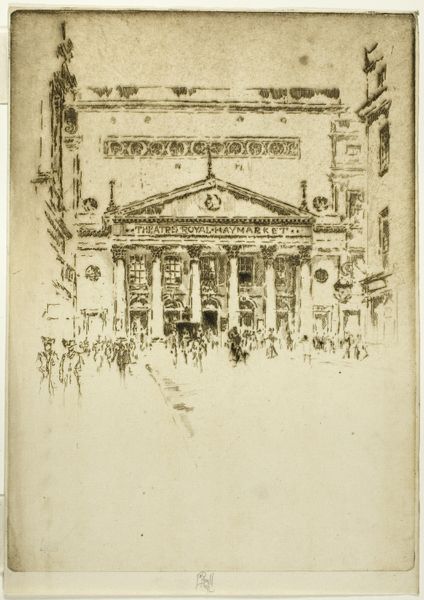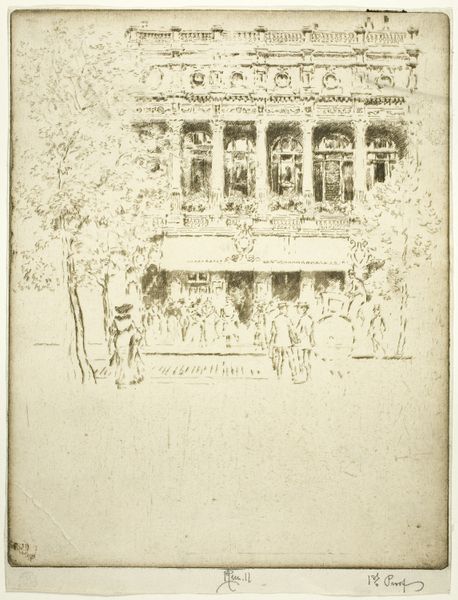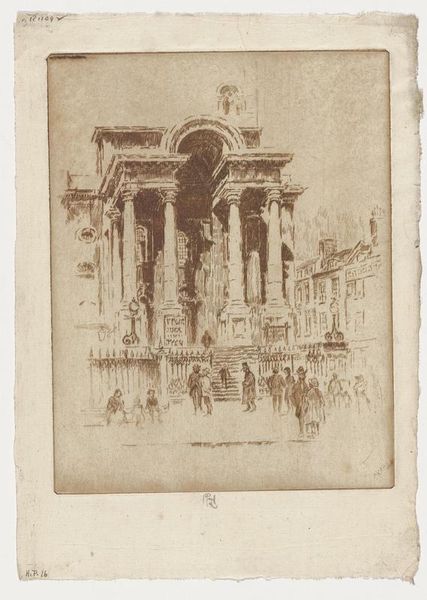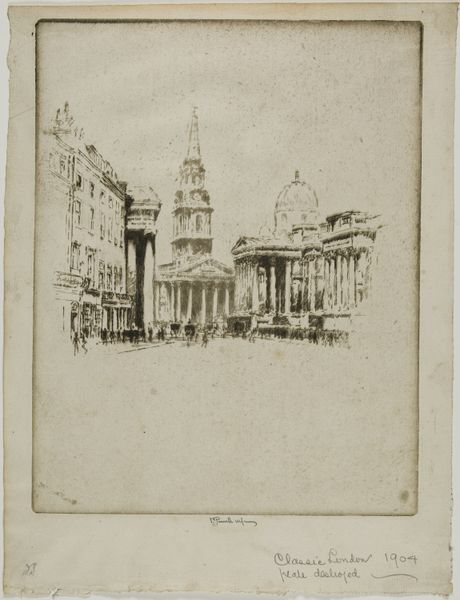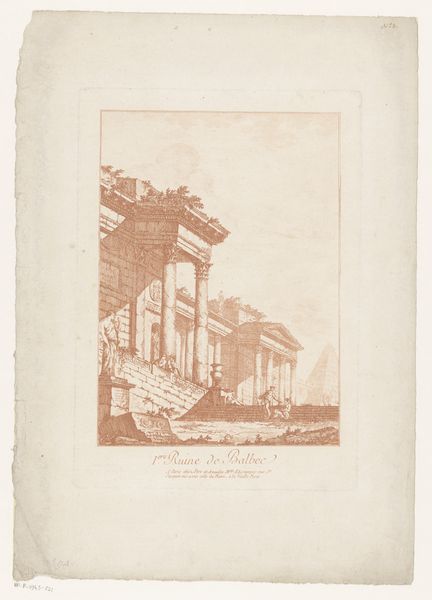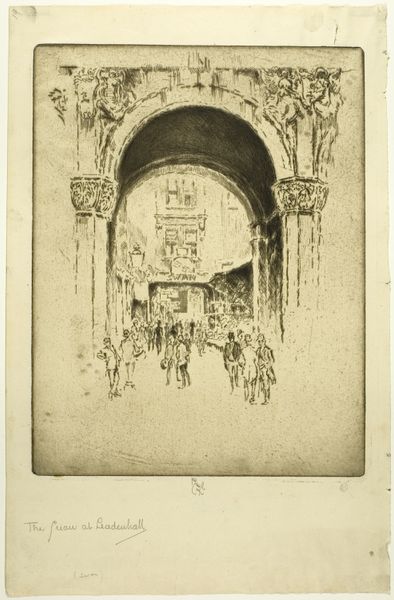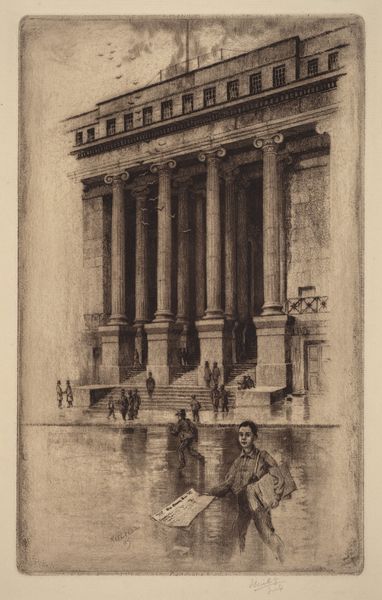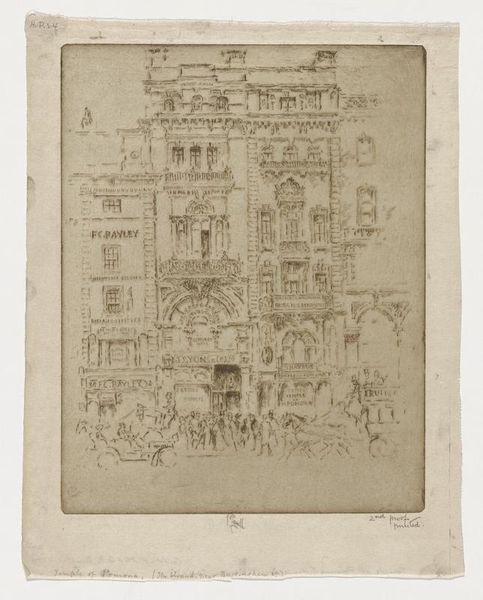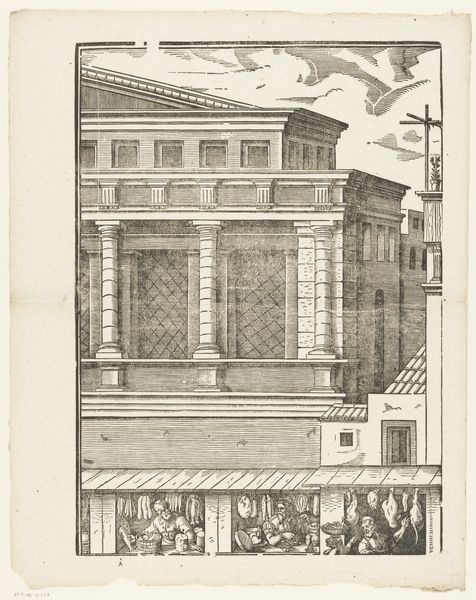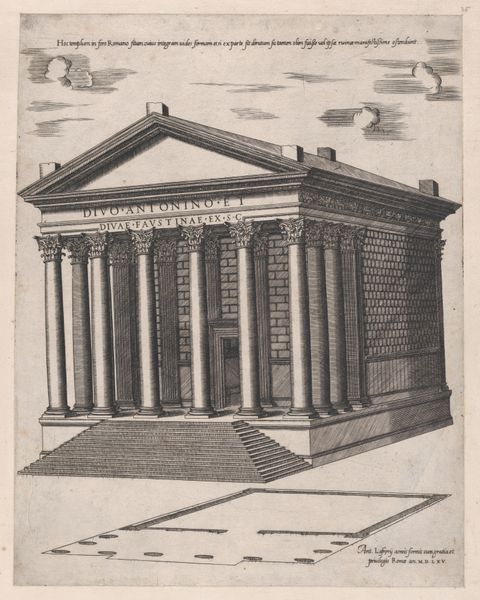
drawing, print, etching, paper
#
drawing
# print
#
etching
#
neo-impressionism
#
etching
#
paper
#
cityscape
Dimensions: 277 × 204 mm (image); 380 × 280 mm (sheet)
Copyright: Public Domain
Curator: It feels a little ghostly, doesn't it? Like a memory of a glamorous night out. Editor: Indeed. We are looking at Joseph Pennell's 1906 etching, "Royal Haymarket Theatre", currently residing at The Art Institute of Chicago. Pennell captured this London scene with remarkable dynamism. Curator: I love the energy of the crowd. It’s just suggestive enough. I can almost hear the murmuring and the rustling of clothes. But what really gets me are those perfectly rendered columns; so stern, and precise atop all that flurry of people. Editor: Pennell certainly excels at juxtaposition. Notice how the verticality of the theatre's façade plays against the horizontal sweep of the crowd? And, furthermore, consider the dichotomy between the architectural rigor of the building, set back in the pictorial plane, and the organic nature of the gathering, advancing out. It is this balance which contributes to a captivating semiotic narrative that draws the viewer in to the picture’s depths. Curator: All that sounds wonderfully accurate, but all I can see is a foggy London evening brought back to life. Maybe that’s what Neo-Impressionism is for me — capturing a vibe instead of a perfect picture? Editor: Precisely! Though often concerned with scientific analyses of color and light, Neo-Impressionist artists like Pennell masterfully created visual experiences which evoke moods, while employing formal approaches that give these emotions depth and visual structure. This, however, must also be understood from a socio-historical perspective if the semiotic complexities of the artwork is to be properly understood. Curator: Well, regardless, I'm off to imagine myself in a fancy gown walking into that theatre. Maybe that's the true point: not just the structure of it all, but the life swirling around those stone pillars. Editor: I concede the evocation of lived experience here does encourage one to remember that structural composition and subject material can only take meaning with the presence of a thinking body interpreting its form.
Comments
No comments
Be the first to comment and join the conversation on the ultimate creative platform.
